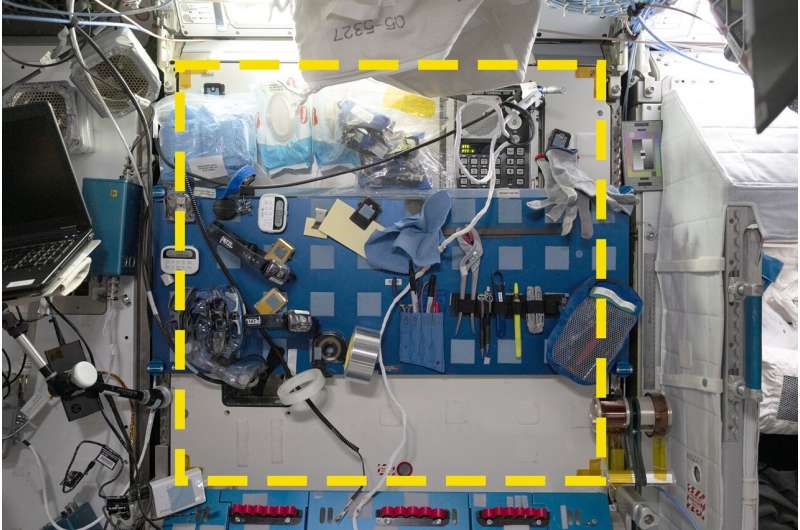This article has been reviewed according to Science X's editorial process and policies. Editors have highlighted the following attributes while ensuring the content's credibility:
fact-checked
peer-reviewed publication
trusted source
proofread
Study finds discrepancies between intended and actual use of certain areas aboard the International Space Station

An archaeological strategy adapted for space used daily photos to reveal how astronauts actually use areas aboard the International Space Station—and how this differs from intended uses. Justin Walsh of Chapman University, California, and colleagues present these findings in the open-access journal PLOS ONE on August 7, 2024.
More than 270 people from 23 countries have visited the International Space Station (ISS) over more than two decades. Crew member interviews can reveal how people adapt to a novel environment—one featuring isolation, confinement, and microgravity—that is far removed from the context in which humans evolved. However, interviews may be unable to capture insights that could be captured by alternative approaches.
In order to better understand the "microsociety" of the ISS, Walsh and colleagues launched the International Space Station Archaeological Project, which applies an archaeological framework to the ISS and studies the materials used by its crew as artifacts.
For their first direct work on the space station, the team adapted a traditional archaeological strategy known as the shovel test pit, in which small pits are dug at intervals across a site to assess artifact distribution and select areas for more extensive excavation.
In this case, the archaeologists asked the ISS crew to document six locations around the station, and instead of digging pits, taking daily photos of each location for 60 days in 2022.
The article reveals findings from the first two of the six sample areas to be fully documented: one designated for equipment maintenance and another near the latrine and exercise equipment.
Further analysis of photos in these areas using a novel open-source image analysis platform developed by the team revealed 5,438 instances of "artifacts" being used for varied purposes, such as writing tools, Post-It notes, and an augmented reality headset.
Cross-referencing the photos with astronaut activity reports, the researchers found that the area near the exercise equipment and latrine, while not designated for any particular purpose, had been used as storage for toiletries, resealable bags, and a rarely used computer.
The equipment maintenance area was used primarily for storage, with little or no maintenance actually carried out there.
These findings demonstrate how traditional archaeological techniques can be adapted to study remote or extreme habitats. The findings could also help inform the development of future space habitats.
The authors add, "The experiment is the first archaeology ever to happen off of the planet Earth. By applying a very traditional method for sampling a site to a completely new kind of archaeological context, we show how the ISS crew uses different areas of the space station in ways that diverge from designs and mission plans. Architects and planners of future space stations can learn valuable lessons from this work."
More information: Archaeology in space: The Sampling Quadrangle Assemblages Research Experiment (SQuARE) on the International Space Station. Report 1: Squares 03 and 05, PLoS ONE (2024). DOI: 10.1371/journal.pone.0304229
Journal information: PLoS ONE
Provided by Public Library of Science




















